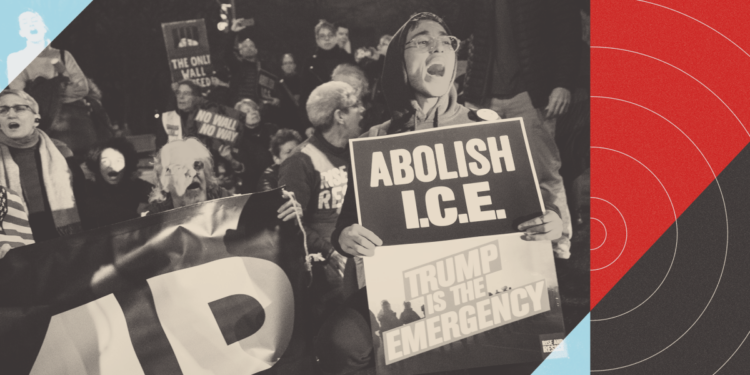In his first term, Donald Trump expanded immigration enforcement, including directing US Immigration and Customs Enforcement (ICE) to increase workplace raids. In Pacific County, a peninsula located on the southern coast of Washington state known for shellfish farming and cranberry cultivation, this became clear. Residents noticed ICE agents parked outside supermarkets and in the port area. Rumors began to spread of people disappearing and being taken to the Northwest Detention Center in Tacoma. During a public meeting a few months after Donald Trump took office, ICE told community members that, although the agency prioritized people with criminal records, no one without legal status was protected from deportation.
“ICE officers were just trying to pick people off to pick them off.”
Geographer Leah Montange researches the effects of these raids on communities and is active in the immigrant justice movement in the Pacific Northwest. I spoke with her about how ICE tracked immigrants last time, how the impact of such raids reaches far beyond immigrant enclaves, and the lessons for a next Trump administration.
On how ICE operates: ICE will do this groundwork. They identify an apartment building to pick people off, maybe as they’re going from their apartments to their cars or work. They put a pair of ICE officers at the port where people were harvesting shellfish—or outside the trailer park where undocumented people lived. And they wait.
There was an incident in Washington state’s Pacific County that was particularly insidious—and part of what instigated community protection and defense in the area. The ICE officers responded to a woman who was selling piñatas over Facebook and they set up a fake purchase. They met her in a parking lot and arrested her.
Until then, people in the community wondered if the folks who were being picked up were actually somehow involved with the criminal justice system and maybe there were reasons why ICE wanted them. It became really clear at that point that these ICE officers were just trying to pick people off to pick them off.
On priorities for deportation: The first time I went to a check-in at an ICE office, the client had gotten a deportation order. The immigration lawyer told us it’s the new priorities, this person wouldn’t have been deported before. And then we were like, well, what are the new priorities? And the immigration attorney said, there are no priorities, everybody can be deported. It’s a free for all. [I remember] this interview with the sheriff on the BBC. He said, “Yeah, I voted for Trump, but I didn’t think they were going to take Mario, I didn’t mean Mario.”
When the rubber hit the road and ICE came to town, it’s not what the community actually wanted. That’s what will start to happen in other places if Trump 2.0 is more successful than Trump 1.0 was at pulling off mass deportation.
On the impact of immigration enforcement: When there’s intensive immigration enforcement happening, it impacts the whole community. Businesses had to shrink their operations. It was disruptive to the schools and the lives of everybody left behind—whether that’s the citizen children of the people who are targeted by ICE, or the neighbor who is losing their friend, or the mom whose kid goes to school with the child of the person being deported.
Immigrant communities are not little enclaves that are isolated from the rest of our society. The food you eat when you get takeout is made by an undocumented immigrant, or the roof on your home was made by an undocumented immigrant, or just the food you buy in the grocery store was grown by undocumented immigrants.
We’re not all going to be treated the same way by the Trump administration, but we’re all interdependent with one another. We’re all affected by this.
On deportation as retaliation: [During the first Trump administration], they just moved so quickly, it felt like it was very volatile, changeable, one thing after another. Very often, we were on our back foot and responding to changes that were happening. It felt very complex.
We started seeing deportation orders put out against people who were involved in migrant justice organizing or who were vocalizing dissent and who ICE was able to identify were undocumented or had some sort of liminal status. That was a pattern nationwide. There was litigation around these politically repressive deportation orders that were put out, but many of those cases settled just with an alleviation of that specific deportation order. Immigration enforcement in the history of the United States has often had an emphasis on suppressing dissent.






